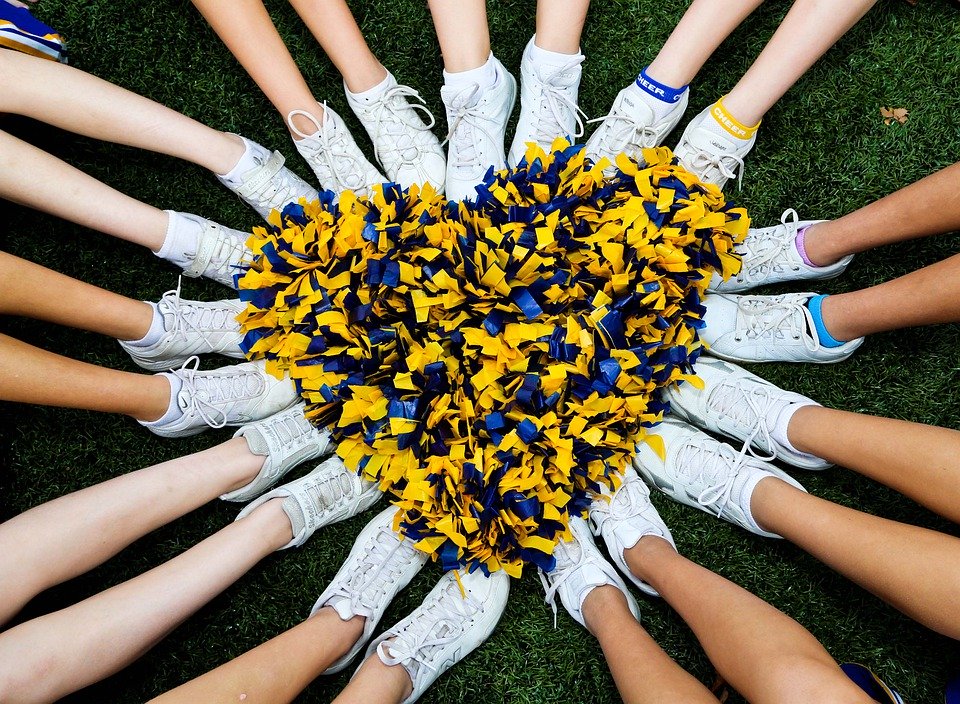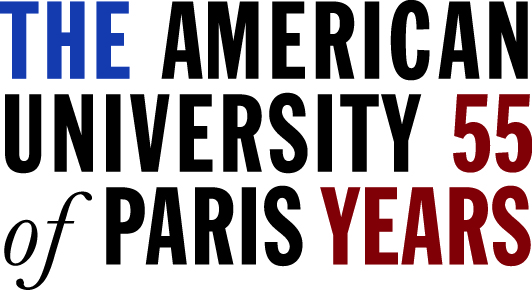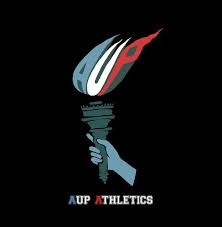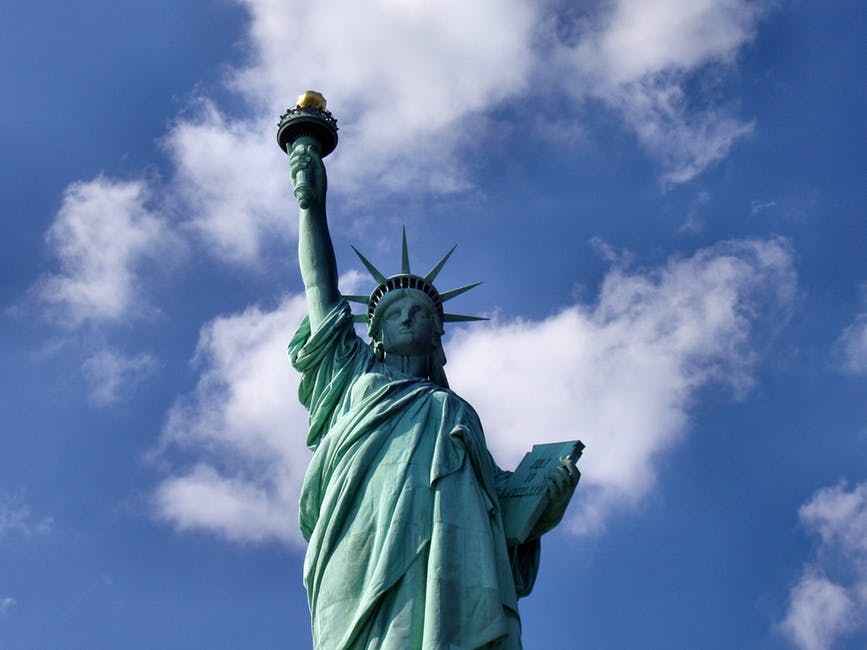AUP's Mascot Dilemma
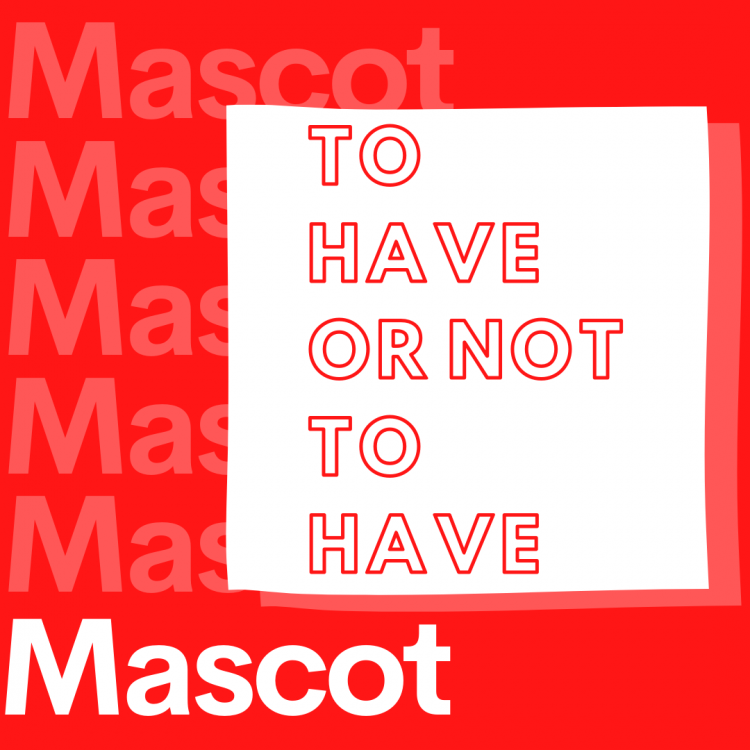
In pop culture, college is romanticized as a place for discovering social identities and unearthing personalities. But, what happens when new students are unable to find their identities at the start?
In his 2018 doctoral dissertation “The effect on social identity and college retention”, Jason Melford Pettigrew explains that a student’s connections to their college and resulting acquired social identity are so serious that it can impact their decisions to remain in that college.
Pettigrew reports state that one of the essential tasks of a new college student is to develop an identity as a member of the college student group in which that sense of belonging translates to a sense of affiliation with a group’s recognition.
A symbol is one of the most popular examples to embody an organization’s attachment and recognition. For colleges, a mascot is a go-to community-wide icon. Nearly 85% of American colleges with a sports program (NCAA members) have mascots. And, most universities have an Athletics program. AUP, an American university, is left without a mascot and yet has its fair share of sports teams.
Image: PexelsIt is no surprise that the question of AUP not having a mascot came up during Spring Orientation.
Mascot's and their associated nicknames remain transcendental symbols of unity and pride. And in no small way, can give way to students on their long-winding course for social identity.
A mascot is an animal, toy or figure which is originally thought to bring good luck. The word mascot originates from the 1860's French word "Mascotte" meaning talisman or charm.
Over time, mascots and their accompanying slogans have become recognized figures associated with a college or institution. A mascot can be a rallying element when bolstering school team spirit or a symbol of pride within a community.
For the same reason outlined above, cheer teams and mascots go together like bread and butter. They serve excitement and help to boost the confidence of people. Which in turn can lead people to desperately root for their teams.
But here, in the institution of AUP, with a small and diverse student community, a unifying symbol is proving to be peculiarly difficult to find.
Searching for the Unity in our Diversity - Why don't we have a mascot?
"The American University of Paris does not have a mascot. While several attempts to create a mascot were launched in the past, involving both students and staff, so far, no mascot has been agreed upon."
In a search for well-rounded answers, Peacock Plume reached out to the office of Communications, Student Development, and the Athletics office to see what they had to say. This article combines a synergy of statements from the departments with the inclusion of the student body.
AUP's Director of Communications, Kilian Ordelheide, has officially declared in a written statement, that the university does not have a mascot. While there had been conversations in the past, no concrete action had taken place yet. The office for University Communications, as noted on AUP's website, is responsible for the institution's internal and external communication needs. Such as the University's website, branding, and logo. In his statement, Ordelheide acknowledges that the mascot topic is an age-long conversation.
He adds more breadth to the issue by revealing how dynamic and old the mascot conversation is, from an Alumni perspective.
"I remember that this discussion already surfaced when I was a student, and, at the time, there was not enough support from within the student community to establish a mascot."
However, The Office of Communications expresses its support for a mascot even in the absence of a general consensus. It affirms that the decision and the possibility of AUP having a mascot lies with the student body.
"The Office of Communications has always believed that a mascot would be a rallying symbol primarily for AUP’s student body, and should thus be born out of a student-led effort. We do not want to impose a mascot on our students and instead would support the efforts of students in selecting a mascot for the University."
In a close call, a survey that had been sent out to the student body showed mixed reactions to AUP having a mascot. 53.8% wanted AUP to have a mascot while 46.2% disagreed with the idea.
The pro-mascot voters noted that it would be fun and boost school spirit while giving a sense of community while the anti-mascots thought it was a waste of time and resources for a small school like AUP with relatively little sports following. However, the question of what our mascot should be elicited only one response; no idea. However, other responses are not to be ignored.
"An animated globe or French toast"
The mascot suggestions were interesting, to say the least. From all types of bird examples like pigeons, peacock, roosters, falcons to insects like cockroaches (also an on-campus publication) and random animals like bears, armadillos, and snails. In respect to the AUP's location, suggestions included Parisian staples like lights, croissants, baguettes, wine bottles, and cheese.
Image: Pexels
Coming from the Student Development Department, during an in-depth interview with AUP's Dean of Students, Kevin Fore helped unpack the mascot concept and its ability to contribute to the university's social identity. Delving deeper into the conversation of an AUP mascot, Fore discussed what a mascot embodies and how it can help connect AUP's diverse student body.
Fore first spoke about the challenge of adopting a mascot from a different perspective — It is subjective yet a community-wide effort.
"A mascot is a symbol that represents the spirit of a place. Something that embodies our values, that captures in an image an essence of who we are."
Fore states that the drawback to adopting a mascot lies in its subjectivity and the need for a community-wide consensus.
"People come with different ideas of what the mascot should be and although we have the same ideas of what our values are, a clear set of values as an institution, the difficulty lies in translating these values visually".
In tandem with the Director of Communications, Ordelheide, Fore states that the biggest challenge has been getting everyone to come to a universal agreement.
Ordelheide confirmed that AUP has an official logo that is featured on the school's website.
"AUP's logo was first created for AUP’s 50 year anniversary and has since become its permanent logo. That being said, the University recognizes that its evolution over the last ten years warrants the review of its logo and potentially the design of a new logo that more closely matches its current identity. That process will start in 2020".
Within correspondence, Communications confirmed it has no concrete plan to adopt a mascot as AUP's logo has always been first priority.
Fore reiterates the same as well. "The logo should come first. While there is a temporary one, it makes sense that it has to be finalized and then the next step can be a mascot which will be an encompassing symbol." Fore perspicuously stated "The logo and the mascot would make sense to flow from the same kind of visual branding but it should be a separate conversation. There are some elements that align the two". One element would be AUP's central identity.
AUP's logo, with its recognizable color palette of red, blue and white, is reflective of the US and French flag. It is unknown if the choice of colors to match both countries' flag is coincidental or intentional but it provides a precedent for the quest to unravel AUP's student body's central identity which is critical to the adoption of a mascot.
It is also important to consider the Athletics Department's logo as a potential beginning point for a future mascot. After all, a mascot has traditionally been tied to athletics. In a 2016 article published on AUP Athletics website, Athletics Director, Ashkan Shilbaf, delineates the origins of the AUP's athletics symbol, "The Torch".
In Spring 2016, due to increasing pressure from student-athletes, the Captains Committee and athletics department held a campus-wide contest for a logo. Darwin Robles, an AUP senior in Computer Science won the contest by proposing the torch from Statue of Liberty be the Athletics department new symbol. The Statue of Liberty's official accompanying phrase "liberty enlightening the world", and the AUP athletic symbol perfectly espouse the American and French ideals of liberty.
Out of all the student submissions, the Captains Committee chose to use the torch from the Statue of Liberty with the flames in AUP's red, white and blue colors instead. The flames, while attributed to common sports motifs, signifies light and knowledge. The Athletics logo encompasses a moniker as well as the Athletics Alumni reference to "Eternal Flames."
In a written statement, Shalbaf asserts that the adoption of the athletics logo could prove purposeful AUP's mascot in the way it helped to create a connection among student-athletes. Athletes have the torch emblem imprinted merchandise including water bottles, uniforms, and shirts which sets them apart from other teams and unifies them as a whole
"I think AUP Athletics needed a symbol to reunite all members of the teams, across all disciplines. We addressed that in 2016, and our unique symbol's story will help lead the way to bright days ahead."
Image: AUP Athletics
A Central Identity
"We are in-between worlds"
Statistics from Fall 2019 shows that AUP has 1115 students; 1000 undergraduates and 115 graduate students, together who represent 105 nationalities and speak 65 languages and dialects in total. However, among this abundance of cultural diversity, AUP's central identity remains evasive. Mostly because the social structure at the institution, like most urban campuses as Foure reveals, is somewhat tribal.
Recent transfer student and AUP marketing major, Mina Seif, recounts how difficult it is to find a commonality with students on campus while making a case for an AUP mascot. "It's like we go to school here and that's it. A mascot has to do with school spirit and representing your school." At Mina's high school the student body was known as the Mustangs, and she says it was beneficial for sports and branding.
Seif asserts that a mascot, with its accompanying slogan, would be an extremely unifying aspect to the campus.
"I think a mascot could be something to mark our identity. A defining icon we can all identify with. “
Having worked with AUP's student body for over a decade, Fore is well qualified to give an insight into what AUPs’ central identity might be.
"For many of us staff and students alike, it's like we are in-between worlds. We are looking at the world outside of national boundaries to some extent and that creates a third space. AUP is that third space and it creates a space that most of us have sought out and when you get to AUP it feels like a place you want to be in. In between cultures."
Fore explains that there is no one dominant culture here as students and faculty are from all over the world. AUP is a small university with so many cultures. He further states that everything gets mixed up and this allows for critical reasoning.
"You cannot make any assumptions or take anything for granted."
As the interview progressed, Dean Fore duly points out what sets apart AUP from other international institutions with complex cultural identities and abundant diversities.
"We are in a different space and we are the "other", unlike a traditional US university where there's a mainstream American student body and there's the others--international students culture. Here everyone is the "other". AUP is comprised of international students and even French students at AUP are in a different system altogether."
Progress
Mascots are traditionally regarded as sports symbols. Anti-mascot students believe AUP might not need one if the sports program lacks the pomp and fanfare observed at large scale games held by universities with bigger athletics programs. When asked, the Athletics Director stated that AUP not having a mascot has nothing to do with the popularity of AUP's sports program. Shalbaf states that teams like the Women's Volleyball, measure up to inter-regional standards with students attending games from time to time.
Shalbaf also says during its peak, AUP's cheer team flourished well in Paris with serious coaching and attention. He says the program only ended when interest decreased over time. He asserts that the decision of having a mascot strongly depends on students and the momentum needed to push it through.
In the latter part of her interview, Seif suggests that the student body should cast a vote through the senate body on pre-selected options as to what the AUP mascot should be in a democratic manner.
"The Department of Communications would certainly support students’ efforts to create a mascot for the University.”
Regardless of when and what time the issue of getting a mascot gains more and more in forwarding momentum, the office of Communications has expressed its support of a mascot.
AUP's Athletic department found a way to visually represent its central identity as inspired by the Statue of Liberty. However, the statue of liberty whose torch is emblematic of AUP's Athletic logo is used solely by the department and many say it makes it hard for non-athletes to identify with. However, it was a non-athlete who came up with the symbol in a bid to represent AUP and tie together both it's American and French cultural identities. The result was a unifying symbol.
Image: Pexels
In keeping with Robles idea, AUP's online homepage statement, "preparing students from everywhere to thrive anywhere," suggests a sense of liberty. To be unafraid in the freedom of making one's own path wherever it may be. AUP considers its students to be global explorers with the power of autonomy. In keeping with the Statue of Liberty, the university is enlightening students in the face of a turbulent yet changing world.
At AUP, national boundaries are blurred and we are what we make of ourselves, individually and as a community. This liberty belongs to multiple spaces and cultures and it is a common thread that runs throughout the university's central identity. However, it would not be wrong to say we are in need of an encompassing symbol and identity marker to prove that we believe ourselves to be a unified community.

